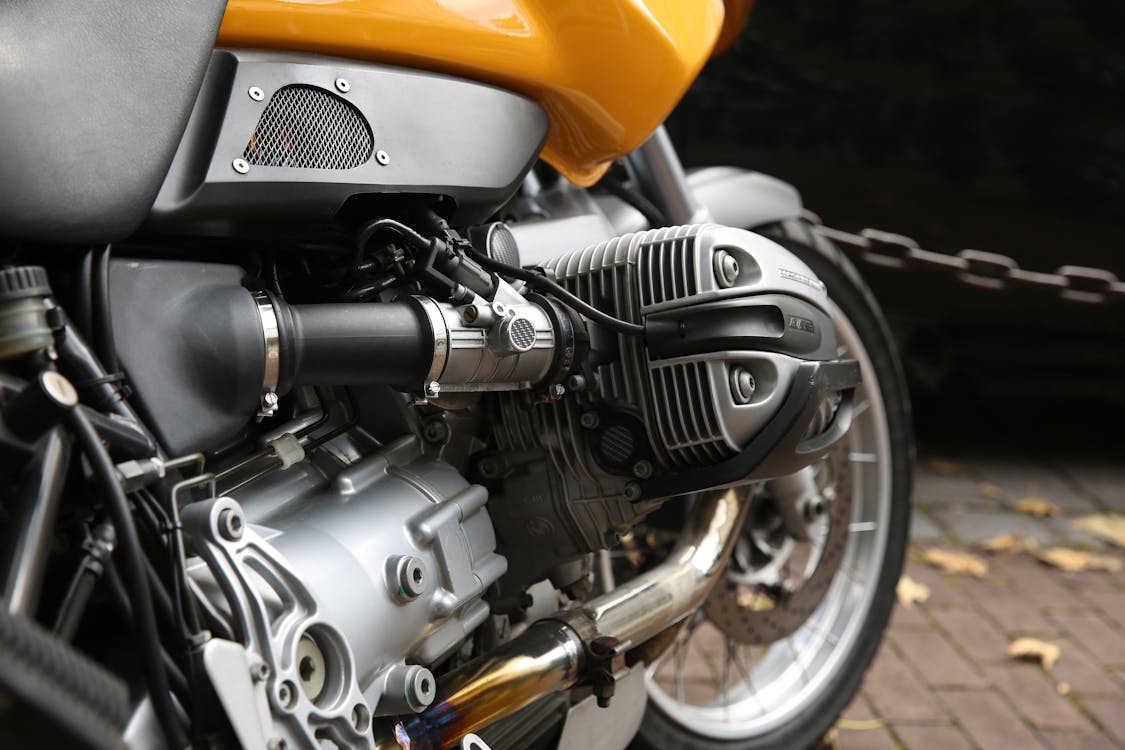So you’ve unleashed your inner gearhead and pimped out your motorcycle with the latest performance parts. A throatier exhaust, a fine-tuned suspension, maybe even a fancy new paint job – it’s a head-turner for sure. But as the wind whips through your helmet, a question pops into your head: Does my high-performance motorcycle insurance cover all these modifications?
The short answer? It depends. Buckle up, because we’re about to navigate the sometimes-tricky world of high-performance motorcycle insurance and aftermarket parts.
High-Performance Insurance: Built for Speed (and Maybe a Little More)

Regular motorcycle insurance is great for everyday rides, but for those who crave speed and precision, high-performance insurance offers a higher level of coverage. These plans typically cater to motorcycles with more power and performance capabilities than your average street bike.
Here’s what high-performance insurance might offer (depending on the specific provider):
- Increased Coverage Limits: Standard motorcycle insurance might have limits that aren’t enough for a high-performance bike. High-performance plans often offer higher coverage limits for things like collision, comprehensive, and liability, ensuring you’re protected in case of an accident.
- Track Day Coverage: If you enjoy pushing your limits on the racetrack, some high-performance plans offer coverage for sanctioned track days. This can be a lifesaver if your bike takes a tumble during a high-speed run.
- Agreed Value Coverage: This type of coverage guarantees a pre-determined payout in case of a total loss, reflecting the potentially higher value of a modified motorcycle.
The Aftermarket Maze: Not All Modifications Are Created Equal
Now, let’s talk about those aftermarket parts. While high-performance insurance might sound like a perfect fit for your souped-up machine, there’s a catch: not all modifications are treated equally.
Here’s why:
- Safety vs. Performance: Modifications that enhance safety, like better brakes or high-visibility lighting, might be viewed favorably by insurance companies. In some cases, they might even lead to a discount! However, parts that boost horsepower or speed can be seen as increasing the risk of accidents, potentially leading to higher premiums or even denied coverage.
- Professional Installation vs. DIY: Insurance companies generally prefer modifications installed by professionals. A shoddy DIY job could raise red flags and impact your coverage.
Understanding Your Policy: The Key to Smooth Sailing
So, how do you know if your specific modifications are covered? Here are some golden rules:
- Always disclose modifications: Never try to hide aftermarket parts from your insurance company. This can be grounds for them to deny coverage altogether.
- Read the fine print: Your policy wording is your bible. It will clearly outline what types of modifications are covered and what exclusions might apply.
- Talk to your agent: Don’t hesitate to have a conversation with your insurance agent about your specific modifications and how they might impact your coverage.
Pro Tip: Get it Documented!

Keep receipts and documentation for all your aftermarket parts and professional installations. This can be helpful in case of an accident or claim.
Beyond Coverage: The Risk-Reward Balance of Modifications
Remember, modifications aren’t just about insurance. They can also impact your bike’s performance, handling, and even resale value. Here are some things to consider:
- Performance Gains vs. Handling: While a new exhaust might give you a power boost, it could also affect your bike’s handling. Make sure the modifications complement each other for a safe and enjoyable ride.
- Resale Value: Some modifications might actually increase your bike’s resale value, while others might deter potential buyers. Consider this if you plan on selling your motorcycle down the line.
The Final Gear Shift: Making Informed Choices
High-performance motorcycle insurance can be a valuable asset for riders who crave speed and have modified machines. But remember, modifications and coverage go hand-in-hand. By understanding your policy, communicating openly with your agent, and making informed choices about modifications, you can ensure a smooth ride – both on the road and with your insurance company.








